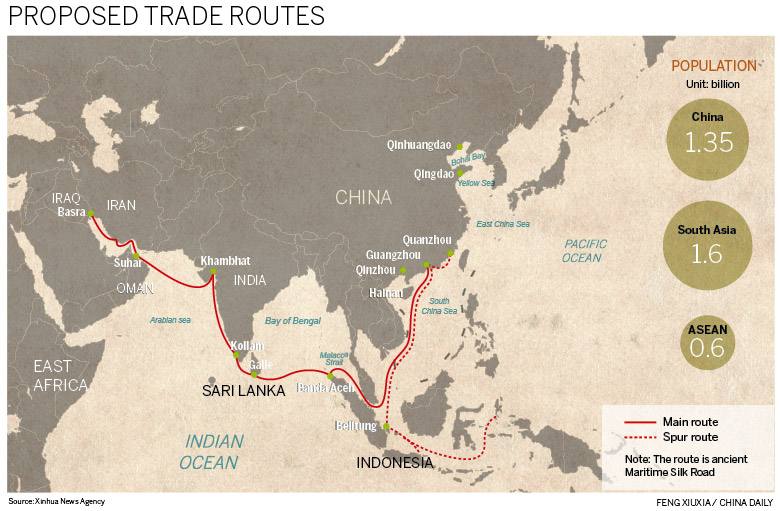Information
Port ruins hoped to prove starting point of ancient maritime silk road
SHIJIAZHUANG, March 8 (Xinhua) -- Chinese archaeologists have begun the second-stage excavation of the ruins of a north China town, hoping to find more evidence for the argument that it is the starting point of the ancient maritime silk road.
The current excavation is also expected to unveil functions of the town as an important trade port during the Jin (1115-1234) and Yuan (1271-1368) dynasties in Chinese history, said Lei Jianhong, director of the research office for underwater archaeology under the Hebei Provincial Institute of Cultural Relics, on Wednesday.
The first-stage excavation of the site began in July 2016 and lasted for more than five months in a 300-square-meter excavation area in the port city of Huanghua, Hebei Province, with findings including 1,000-year-old architectural sites, ancient roads, and pieces of pottery and porcelain.
Approved by the State Administration of Cultural Heritage and organized by the Hebei Provincial Institute of Cultural Relics, the ongoing excavation was jointly run by the State Underwater Cultural Heritage Protection Center and Huanghua City Museum.
Located in the southeast of Haifeng town ruins and about 400 meters from the first excavation, the new site covers 1,000 square meters.
Archaeologists said earlier studies showed that there used to be an ancient river, a coal-ash layer, and marks of human trampling, along with roads leading to the outside, indicating a flourishing ancient port.
"The ongoing excavation is to determine the functions of the port ruins' different zones," said Lei.
"Based on the findings of the first dig, the excavation will look into the details of how the ancient port operated and is expected to provide more proof that ancient Haifeng town was the north starting point of the maritime silk road," Lei added.
About 25 kilometers east of Huanghua, the Haifeng town ruins cover a total area of 2.28 million square meters as a national protected heritage site.
In four excavations since 2000, archaeologists found large amounts of porcelain featuring both southern and northern Chinese styles dating back to the Jin and Yuan dynasties, which showed that the Haifeng town ruins had served as a port for porcelain trade as early as the Jin Dynasty.
Category: English
News
Information
Key words:

